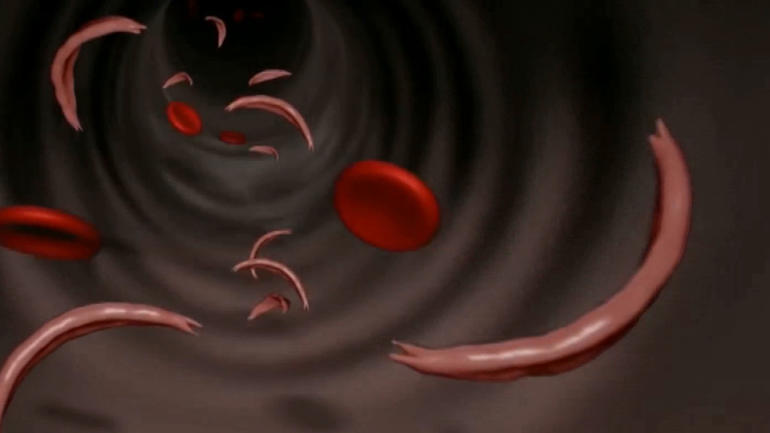Sickle cell disease is debilitating, disproportionately striking people of African descent. In the United States, one in 12 African-Americans has the illness.
Now, there’s hope for a cure through a promising new treatment at one of the world’s leading health agencies.
CGTN’s Frances reports.
Lynndrick Holmes has spent most of his 29 years of life in and out of hospitals – waiting. “I was really just surviving, living in anticipation of death,” said Holmes.
Holmes suffers from sickle cell disease, a rare, genetic blood disorder that causes pain throughout the entire body. “The pain is bone-crushing,” describes Holmes.
And here’s why: blood cells are round and flexible. But with sickle cell, the cells bend into a sickle-like, rigid shape. They pile up, clog vessels and block blood and oxygen from flowing freely. The result is organ damage, crippling pain and sometimes premature death.
“I was very ashamed of it,” said Holmes. “I got bullied growing up as a kid. People didn’t understand sickle cell, so kids thought I had AIDS, so they’d pick on me.”
The physical and emotional toll built up over the years until, one day, curiosity led him to a twist of fate. He discovered that the National Institutes of Health outside Washington, D.C. was looking for people with sickle cell disease to participate in a new clinical trial.
“I was so low in my life, I didn’t care, if you can get rid of sickle cell, I’d rather die trying to be cured than being dead in a hospital from sickle cell, that’s a painful way to die,” said Holmes.
Holmes is one of dozens of patients who have volunteered for the trial that uses novel gene therapy.
Here’s how it works: sickle cells essentially have a defective code, like a misspelling, in their genes. A gene with a normal code – without sickle cell – is inserted into an HIV virus. The portion that causes infection is disabled.
“We have a good 30 plus years in research on HIV so we know a lot about HIV, what it’s good for,” said Dr. Matthew Hsieh, a hematologist at NIH and one of the doctors working on the trial.
And what HIV viruses are good for is transferring DNA into cells, according to Dr. Hsieh.
The virus containing the normal gene is put into the patient via the patient’s own bone marrow.
If successful, stem cells will produce health cells without the disease. It’s a pioneering alternative to what sickle cell patients are limited to now – bone marrow transplants and blood transfusions.
Holmes received the transplant last December and noticed a difference within days.
“I felt like I had more energy, once I got it, once started grafting it into me,” said Holmes. “It was new, it was different, it was amazing. It was overwhelming.” Holmes makes periodic check-up visits to NIH and so far, all is going well.
He hasn’t felt so good in years. “I feel amazing, I feel incredible, I feel ready for the world!” said Holmes.
“We cannot quite call it a cure yet, but I would say it’s pretty close,” said Dr. Hsieh.
There are still no guarantees, and it could take years to make this therapy widely available.
But Holmes is happy to play a different waiting game now, eager for what life has in store.
“I can be selfless in a way that I was never capable of being,” said Holmes. “I’m a human and as long as there’s a man on Earth that suffers and we’re capable of treating or providing a cure, we should, we should. We all need that dignity, we all need that respect, no matter what disease you have.”
Holmes is now sickle cell free.
For inquiries about sickle cell disease studies at the NIH, please contact the Patient Recruitment Center at (800) 411-1222 or by emailing prpl@cc.nih.gov.
Dr. James Taylor discusses Howard University’s fight against sickle cell disease
CGTN’s Frances Kuo talks with Dr. James Taylor, director of the Center for Sickle Cell Disease at Howard University, about international collaboration in fighting the disease.
 CGTN America
CGTN America

